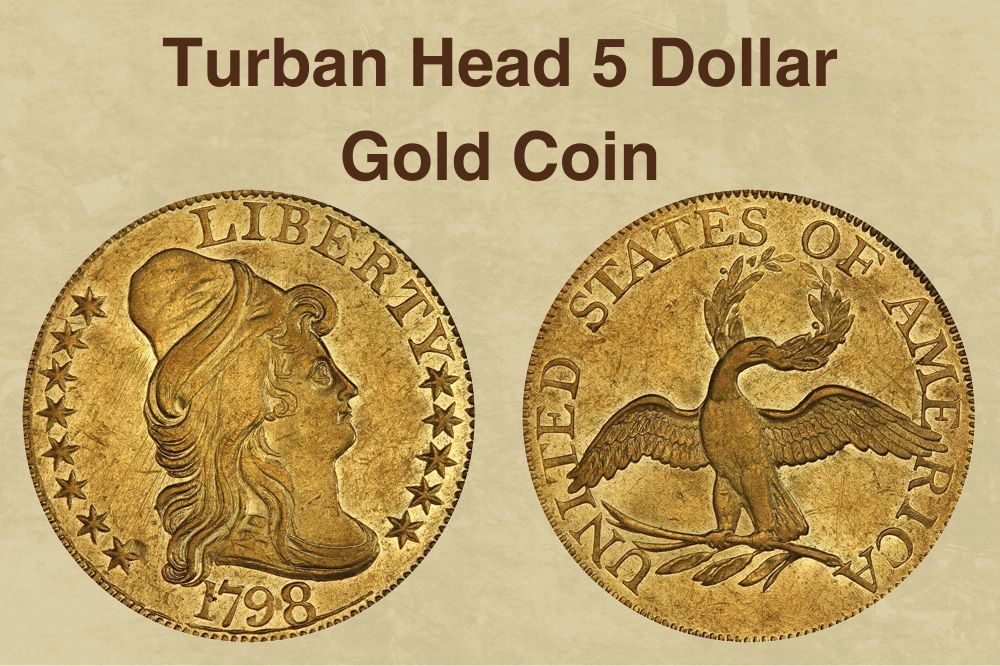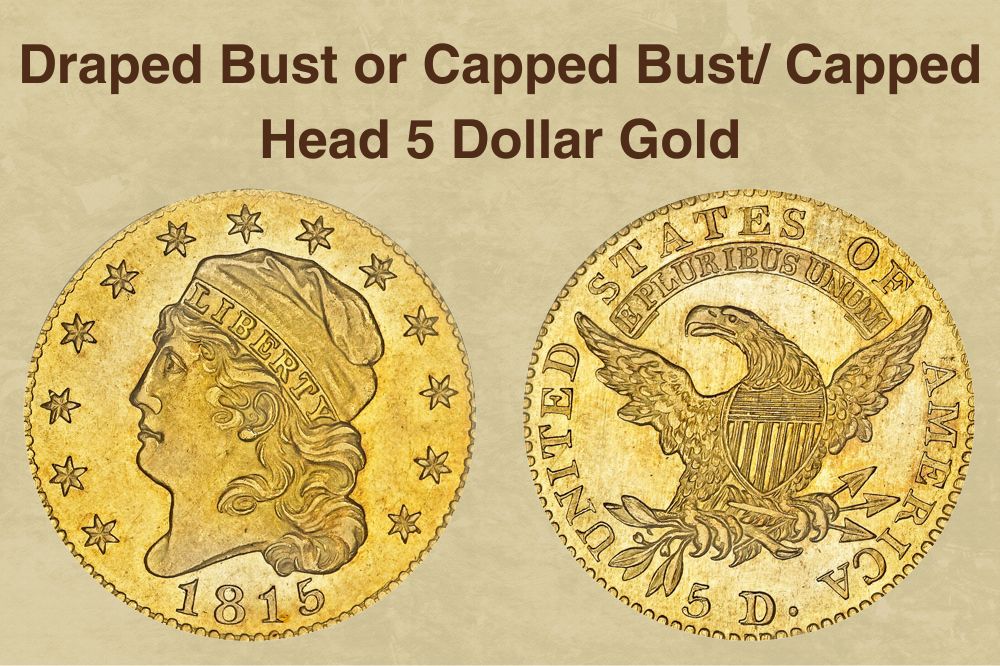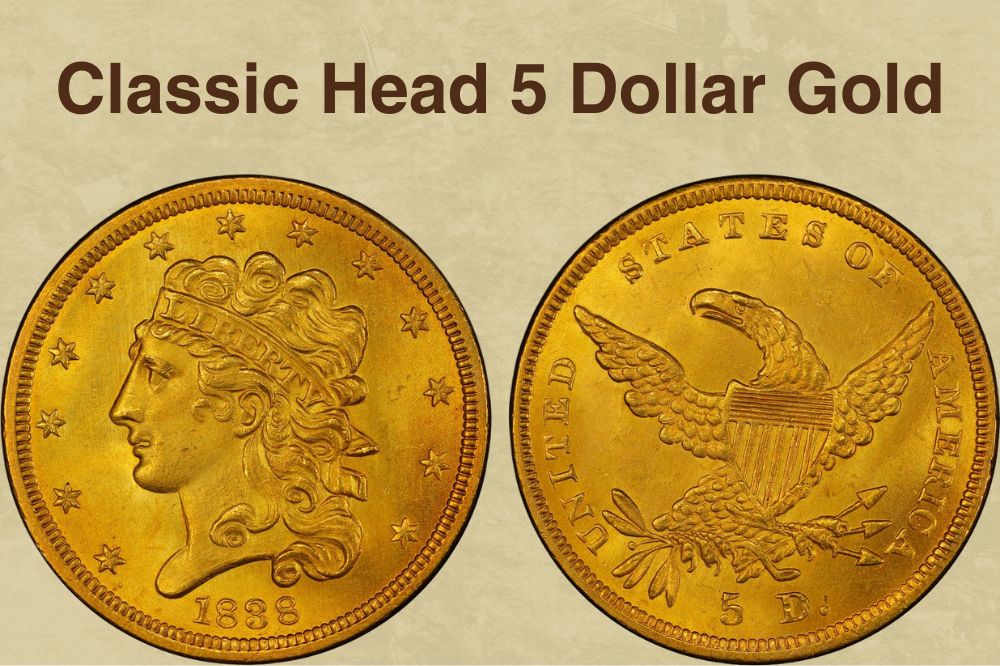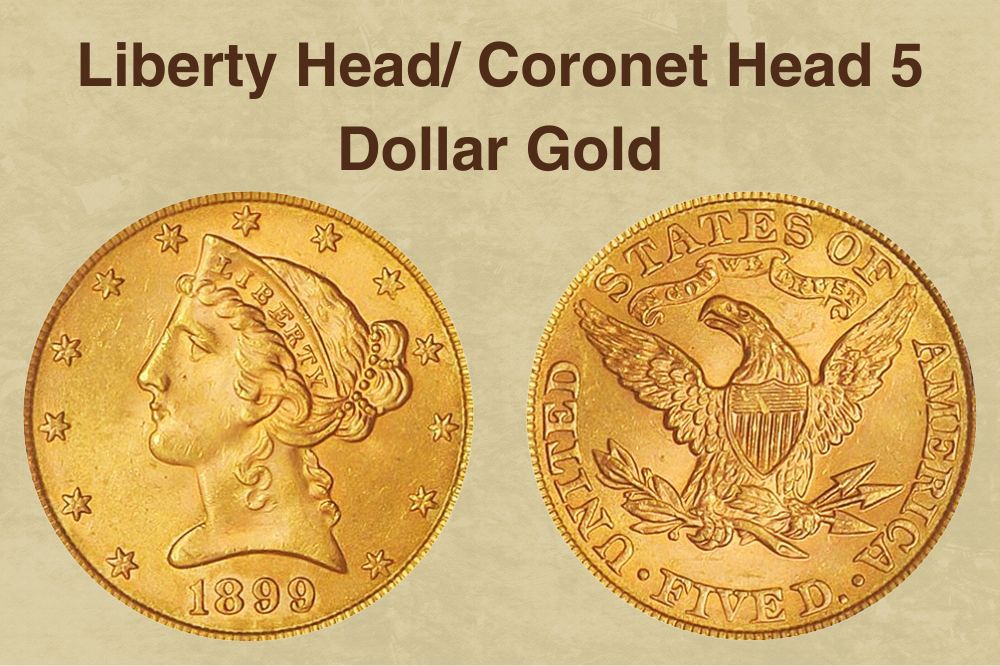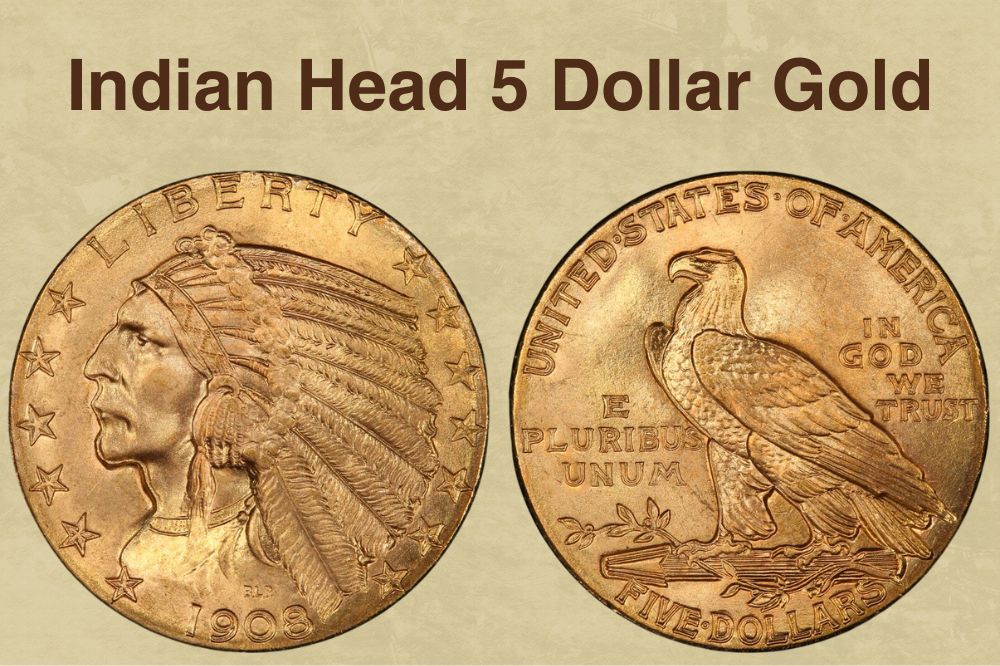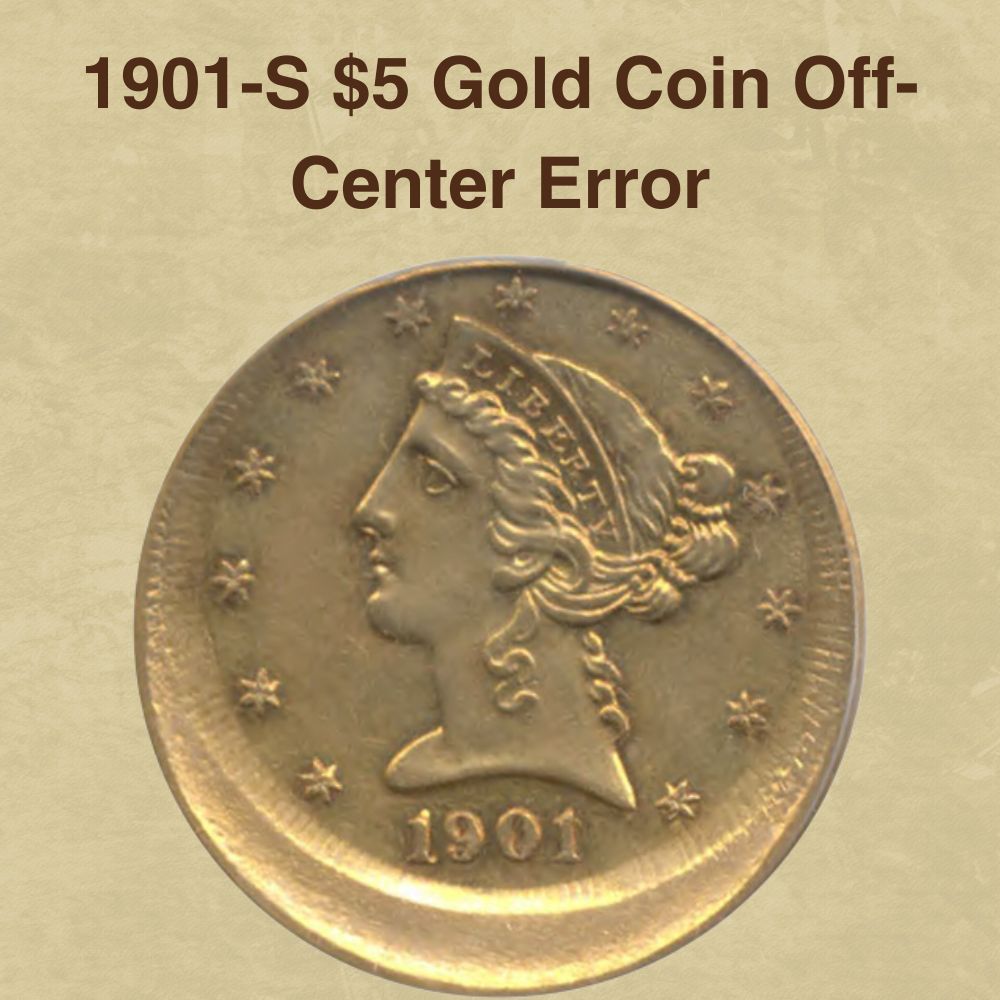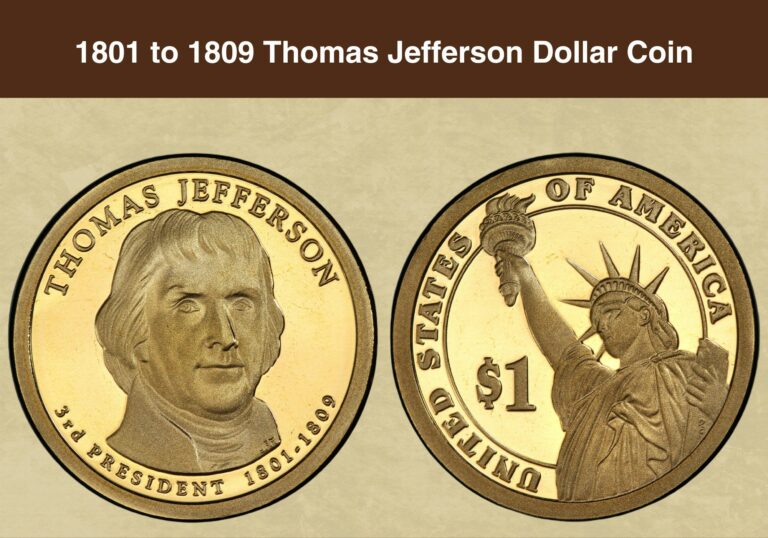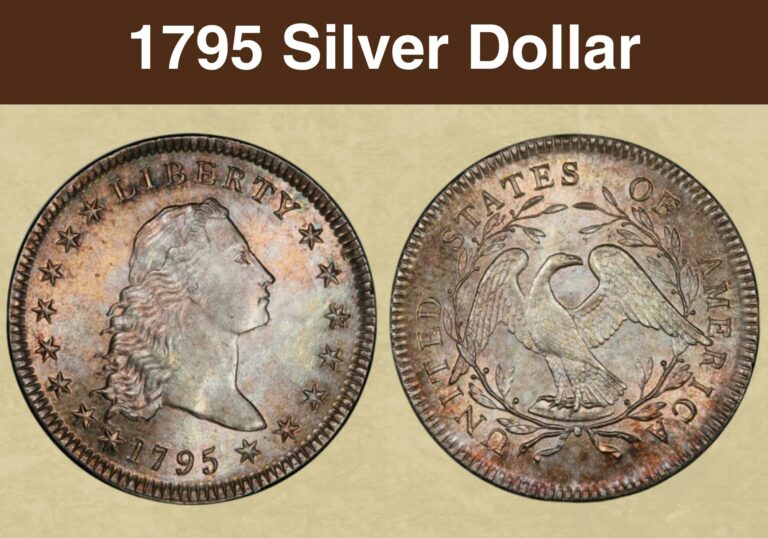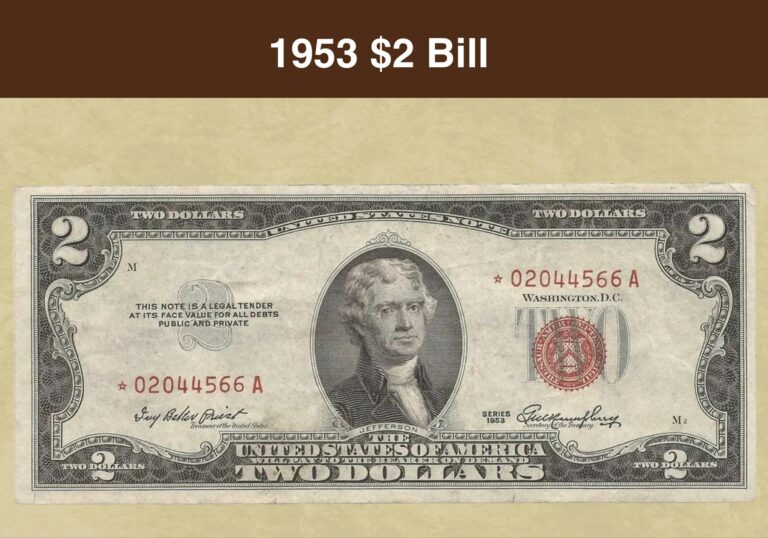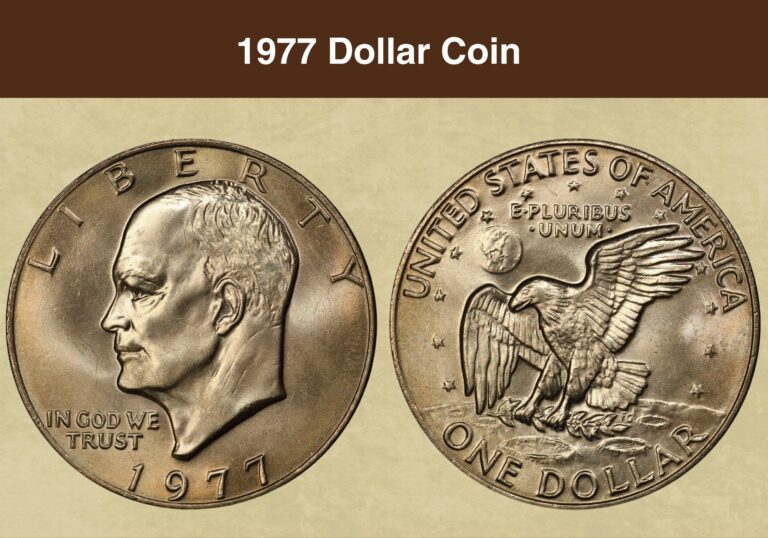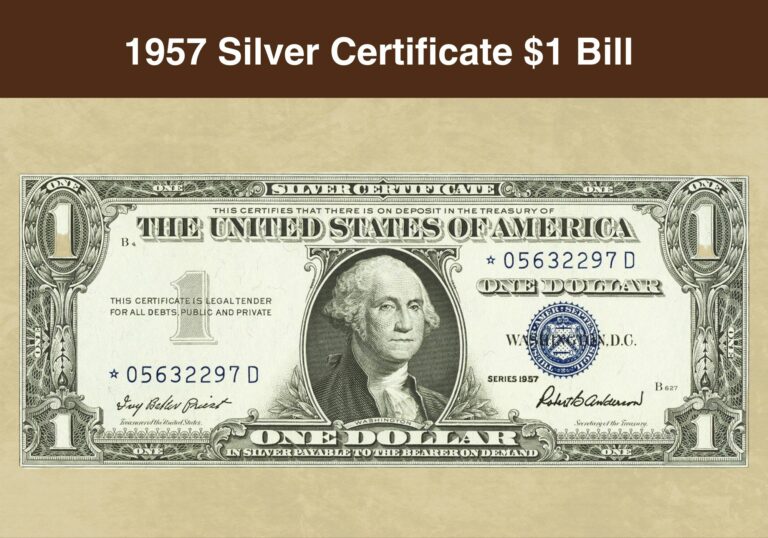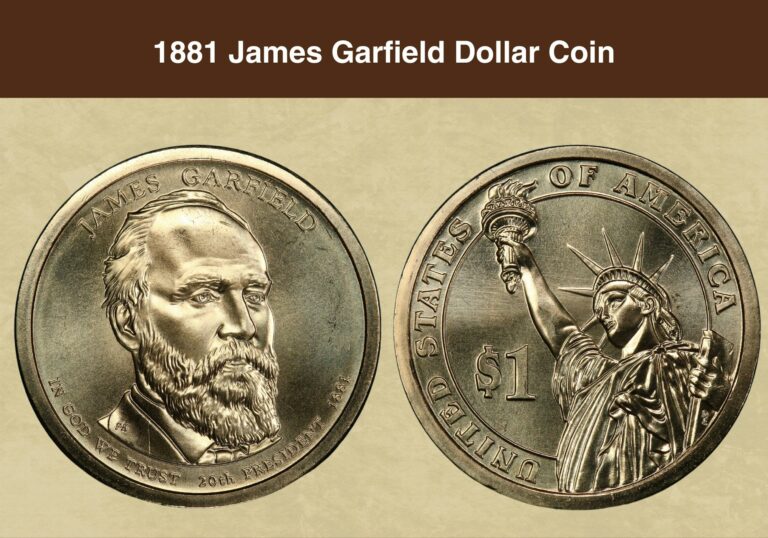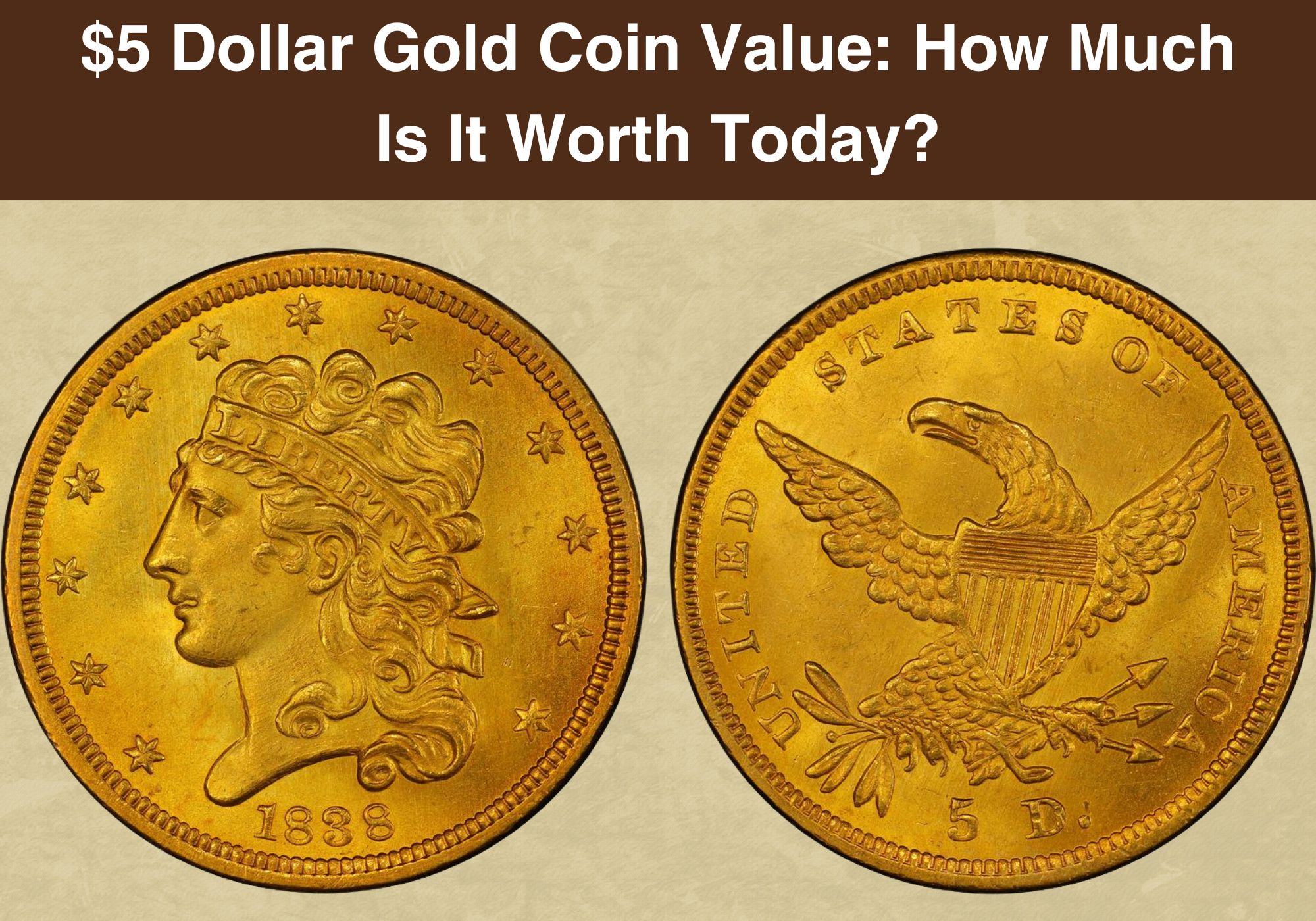
Coin Value Contents Table
- History of the 5-Dollar Gold Coin
- Features of the 5-Dollar Gold Coin
- 5 Dollar Gold Value Guides
- Turban Head 5 Dollar Gold Coin Value
- Draped Bust or Capped Bust/ Capped Head 5 Dollar Gold Coin Value
- Classic Head 5 Dollar Gold Coin Value
- Liberty Head 5 Dollar Gold Coin Value
- Indian Head 5 Dollar Gold Coin Value
- 5 Dollar Gold Coin Grading
- 5 Dollar Gold Coin Errors
- Where To Sell Your 5 Dollar Gold Coin?
- FAQS
Did you know that the 5 gold dollar is the only denomination minted at all eight United States Minting facilities, including Philadelphia, Denver, San Francisco, Charlotte, New Orleans, Dahlonega, and Carson City?
These were among the earliest federal gold coins, with production beginning in 1794. If you want to add a 5-dollar gold coin to your collection, expect to pay a premium for most of these coins.
I wrote this guide to explain everything you need to know about the 5 dollar gold value.
The information here will help you make smart decisions, whether you are considering selling or buying $5 gold coins.
Let’s jump in and find out: How much is a 5-dollar gold coin? Are Eagle half dollars worth anything?
History of the 5-Dollar Gold Coin
The half-eagle was the first gold coin minted in the United States. It was a popular and useful coin in everyday economic life and circulated for over 130 years.
Over its lifespan, the half-eagle dollar, also known as the 5-dollar gold coin, changed its design several times, resulting in five different varieties, each lasting a couple of years.
These five varieties include the turban head, draped bust, classic head, Liberty (coronet) head, and Indian head.
After establishing the first Mint in Philadelphia in 1972, the U.S. Mint began making coins using copper and silver before progressing to gold as required by the Coinage Act of 1792.
In the following section, we will explore the different designs of the 5-dollar gold coin and its evolution over the years.
Features of the 5-Dollar Gold Coin
Familiarizing yourself with a coin’s physical attributes can help you identify 5-dollar gold coins worth money.
Here, we shall look at the features of each of the five types of half-eagle dollars.
Turban Head 5 Dollar Gold Coin
The Turban head was the series’ first design minted from 1795 to 1798. The obverse shows Lady Liberty’s right-facing portrait in which she is adorned in a cap.
The word LIBERTY appears on the top right corner of the coin, while the year date is shown at the base. Ten stars are etched along the inner rim on the left, while five others are shown on the right edge.
On the reverse, a small eagle is positioned at the center, with the inscriptions UNITED STATES OF AMERICA etched at the top along the inner rim.
In 1799, the reverse design changed slightly, with a larger heraldic eagle replacing the smaller eagle. The motto E PLURIBUS UNUM, which translates to Out of One, Many, was also added on a flag flying behind the eagle.
Thirteen stars appear above the eagle’s head, symbolic of the first thirteen states to gain independence from the colonizers.
The heraldic eagle holds an olive branch in one of its talons and arrows in the other talons. The olive branches represent peace, while the arrows symbolize Liberty and sovereignty. A small shield is also at the eagle’s feet, symbolic of the country’s readiness to defend itself.
The Mint produced the $5 gold coin with the heraldic eagle reverse until 1807.
Draped Bust or Capped Bust/ Capped Head 5 Dollar Gold
The Mint introduced a new design of the half-eagle dollar from 1807 to 1812. John Reich designed this new coin, also known as the Capped Bust or Draped Bust.
The coin features a left-facing Lady Liberty in a round cap on the obverse. The word LIBERTY appears on the cap. Thirteen stars encircle the coin’s rim while the year date appears at the base.
The denomination 5 D, which appeared on the obverse in the early coins, was moved to the reverse. The reverse still spotted the heraldic eagle, but this time, the flag was placed above the bird, the thirteen stars in the background were removed, and the eagle nestled on an olive branch.
The Mint changed this design in 1813, removing a large portion of Liberty’s draped bust, which made the portrait appear larger. This new design was called the Capped Head and was produced until 1834.
Classic Head 5 Dollar Gold
William Kneass created the Classic Head design introduced in 1834. Not only did the mint change the design, but it also changed the coin’s metal composition to gold, silver, and copper instead of just gold and silver.
The Mint also reduced the coin’s weight and diameter to minimize the gold needed to produce these half-eagle coins.
The Classic Head $5 gold features a left-facing Lady Liberty on the obverse with a headband strip tied over her curly flowing hair. The word LIBERTY is imprinted on the headband.
Thirteen stars encircle the coin’s circumference while the year date is shown at the base.
On the reverse is the heraldic eagle design introduced in 1813, but the motto E PLURIBUS UNUM is missing.
Liberty Head/ Coronet Head 5 Dollar Gold
The Mint redesigned the half-eagle dollar again in 1839, with Christian Gobretcht creating the new Liberty Head or Coronet Head design.
The obverse features Lady Liberty facing left with her hair held up. She adorns the coronet with LIBERTY etched on it.
Thirteen stars encircle the coin’s circumference while the date appears at the bottom, just like in the previous design.
The reverse remained largely the same, with the only difference being a change in the denomination inscription from 5 D to FIVE D. From 1839 to 1866, the coins did not feature the motto E PLURIBUS UNUM on the reverse. The motto, plus the inscription IN GOD WE TRUST, was reintroduced from 1866 to 1908.
Half eagles struck in Philadelphia no longer contained silver and were only made of copper and gold. While the weight remained the same, the diameter was reduced.
The Liberty Head half eagle is the only coin in U.S. history to have been minted in seven minting facilities, including Philadelphia, Charlotte, New Orleans, Dahlonega, San Francisco, Denver, and Carson City. The coins minted in Dahlonega, Charlotte, and Carson City have the scarcest and most valuable dates.
Indian Head 5 Dollar Gold
The Indian Head was the final design. While the weight, metal composition and diameter remained the same, the obverse and reverse designs changed significantly in 1908.
The obverse shows the left-facing portrait of a Native American adorned in a feathered headdress.
The word LIBERTY is inscribed at the top, while the date appears at the bottom. There are seven stars along the left and six along the right.
On the reverse, you will find an eagle perched on a branch. The inscriptions UNITED STATES OF AMERICA appear at the top along the inner rim while the denomination FIVE DOLLARS is inscribed at the base.
The motto E PLURIBUS UNUM appears on the left side, while IN GOD WE TRUST is inscribed on the right. Between 1914 and 1918, the Mint stopped producing the Indian Head half-eagle and only resumed production in 1929, the coin’s final year.
5 Dollar Gold Value Guides
So, how much is a five-dollar gold coin? This is a great question! The value of your $5 will depend on factors such as the coin’s condition, luster, and mintage.
The five-dollar gold coin is old. You are right if you guessed that these coins might be worth a lot! So, if you are lucky enough to own and sell one of these coins, you could cash in big time.
This section will answer the question: How much is a 5-dollar gold coin worth? Is a $5 gold coin worth anything?
We’ll look at the average value of each variety of the $5 gold dollar coin.
Turban Head 5 Dollar Gold Coin Value
The value of the Turban head 5-dollar gold coin varies from year to year, depending on whether the coin is a key date.
For example, a 1795 $5 gold coin, which was minted in the initial year, is worth about $13,500 to $90,000 in circulated condition. A rare uncirculated one can fetch as much as $780,000 or more.
On the other hand, the 1798 five-dollar gold coin, one of the rarest United States coins due to its exceptionally low mintage, is worth much more. Only seven examples of the 1798 Small Eagle five-dollar coin are known to exist to date.
According to the Professional Coin Grading Service (PCGS), the most expensive example out of the seven was graded Extremely Fine (EF) 40 and was sold for a whopping $275,000 at a 1999 Goldberg Auctioneers sale.
Draped Bust or Capped Bust/ Capped Head 5 Dollar Gold Coin Value
The five-dollar gold coins minted between 1807 and 1812 boast a comparatively high mintage compared to other types of early American gold coins.
You will find all dates in various conditions, from Poor to Fine to Extremely Fine to About Uncirculated to Mint State. Like other early gold coins, the finer the coin’s condition, the pricier these draped bust half-eagle coins become.
Capped Bust five-dollar coins in uncirculated, original condition are rare and highly sought-after. The value of each coin will vary with the date.
For example, an 1807 Draped Bust $5 gold coin is worth about $2250 to $16500 in circulated condition. Rare uncirculated examples can fetch as much as $275000.
Meanwhile, the most valuable 1834 capped bust five-dollar gold coin was graded MS65 and was auctioned for $161,000 at a 2006 Superior Galleries sale.
Classic Head 5 Dollar Gold Coin Value
Classic Head five-dollar gold coins were minted from 1834 to 1838. The Philadelphia, Charlotte, and Dahlonega mints produced these coins in significant numbers.
Uncirculated, mint state Classic Head $5 gold coins are rare. The 1834 Crosslet 4 variety and the Half Eagles minted at the Charlotte and Dahlonega facilities are the rarest and most expensive.
The value of these coins will vary with the mint mark and date. Circulated 1834 Half Eagles are worth between $662 and $1747, while one from 1837 can fetch about $669 to $2118.
On the other hand, an 1838-C Classic Head $5 gold coin in circulated condition will sell for an estimated $4500 to $21,575. Uncirculated specimens are extremely rare and can fetch as much as $283,500 at grade MS63. At the same time, collectors will pay as much as $185,500 for 1838-D Classic Head $5 gold coins
Liberty Head 5 Dollar Gold Coin Value
The Liberty Head $5 gold coin series is undoubtedly long, making it harder to use a single set of standards to determine the value of these coins.
These coins were struck from 1839 to 1908 at various mints, including Philadelphia, North Carolina, Charlotte, and Dahlonega.
Therefore, the value of Liberty Head $5 gold coins will vary widely from one year to another and across the different mint marks.
Rare dates such as the 1842-C Small Date, 1842-D Large Date, 1861-C and the 1854-S are also some of the most expensive in the series.
Generally, expect a Liberty Head $5 gold coin to be worth between $630 and $750 in circulated condition. Uncirculated gems are rare but can fetch as much as $32,500 or significantly more depending on the actual condition and other factors such as rarity.
Indian Head 5 Dollar Gold Coin Value
Scarce dates in the Indian Head $5 gold coin series include the 1909-O, 1908-S and 1911-D, all of which had mintages of less than 100,000.
That said, values will vary from year to year, and depending on a coin’s grade. For example, a 1908 Indian Half Eagle is worth about $700 to $800 in circulated condition, while uncirculated examples will sell for up to $65,000.
On the other hand, a key date, such as a 1929 Half Eagle, will sell for as much as $10000 to $30500 in circulated condition and up to $115000 for ones in mint state.
5 Dollar Gold Coin Grading
With a series as extensive as the $5 gold coin or Half Eagles, applying a one-size-fits-all set of grading standards can be difficult, considering there are so many dates and mint marks.
Most coins in the Half Eagle series are circulated, and most collectors are generally content to own one in good condition.
As a rule of thumb, coins graded Very Fine and Extremely Fine will show some amount of wear on the high points on the obverse and reverse.
About Uncirculated and Uncirculated specimens will have some blemishes or contact marks on high contact points but will also show some luster on the surface and devices.
Check out this video for more tips on how to grade your five-dollar gold coin.
5 Dollar Gold Coin Errors
As we’ve seen, most five-dollar gold coins are very valuable, but did you know that minting errors can further increase their value?
There are several known minting errors seen on $5 gold coins. Here are some that you should be on the lookout for:
1844-D $5 Gold Coin Die Rotation Error
A die rotation error occurs when the minting die spins in its axis, causing the obverse design to be improperly oriented with the reverse design.
The 1844 $5 gold coin produced at the Dahlonega mint is not only scarce, but some issues also show a die rotation error. One of these error coins graded Very Fine (VF) was sold for an impressive $3,340.
1901-S $5 Gold Coin Off-Center Error
An off-center error occurs when the reverse or obverse design is struck away from the center of the planchet due to an accidental repositioning of the die.
In 2006, a collector paid a whopping $1690 for a five-dollar Liberty Head gold coin struck in 1909 at the San Francisco mint. The coin showed a 10% off-center strike toward 12 o’clock.
1899 $5 Liberty Gold Half Eagle Repunched Date
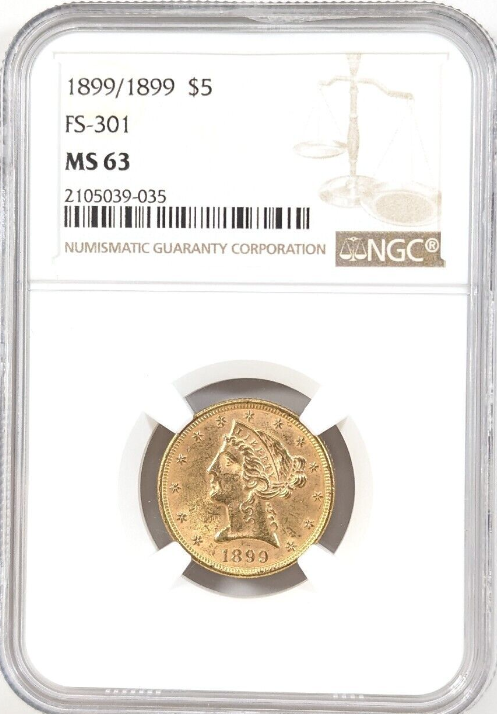
The entire Half Eagle series saw several repunched date errors as dies from the previous year (s) were used to mint coins, resulting in overlapped dates on the planchet.
A good example is the 1899 five-dollar gold coin, in which the die repunched 1899, and you can see the overlap. A collector paid $2,500 for this specimen.
Where To Sell Your 5 Dollar Gold Coin?
Now that you know the value of your coins, do you know where to sell those coins online easily? Don’t worry, I’ve compiled a list of these sites, including their introduction, pros, and cons.
Check out now: Best Places To Sell Coins Online (Pros & Cons)
FAQS
What is the average worth of a $5 gold coin?
The value of $5 gold coins varies widely from year to year and across mint marks. No one set of standards can measure their worth. That said, the estimated average value of a five-dollar gold coin is between $300 and $5600.
How much gold is in a 5-dollar gold coin?
The half-eagle contains about 91.7 per cent gold coin. This translates to 0.1091 troy ounces or 3.3 grams of gold in the five-dollar gold coin.
Is a $5 gold coin a good investment?
Five-dollar gold coins can be a great addition to your investment portfolio, especially if you focus on collecting specimens in higher mint state grades. These classic coins are rare, historically significant and moderately affordable.

